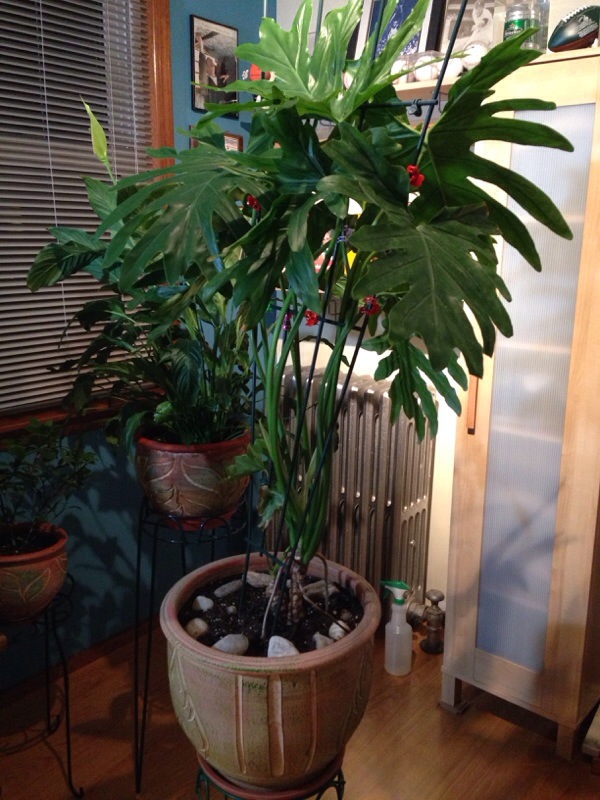Grown as a house plant most places, this survives outside in areas that are virtually frost free. In the wild, this epiphyte can grow 65 feet tall; in nature it is a vining, climbing plant. Indoors provide bright, indirect light, and water when the top half inch of soil feels dry
Overall, your plant look healthy and the brown leaves seems to be only those two at the bottom. It’s normal for plants to lose their bottom leaves as they grow, just the way we lose a small amount of hair every day. We suggest you remove the damaged leaves and examine the undersides closely for signs of insects or spider mites. If they look clean, continue to observe the plant. As long as you are giving it the right amount of light and water, it should be a trouble-free houseplant for you. It might look more attractive if you took it off the metal trellis and let it sprawl naturally. That way the loss of the bottom leaves wouldn’t be so obvious.
If there’s more damage throughout the plant that we can’t see in the above photo, please let us know.






Leave A Comment